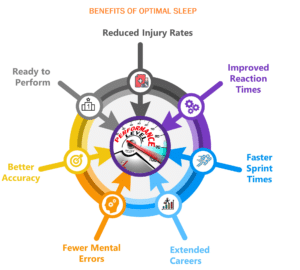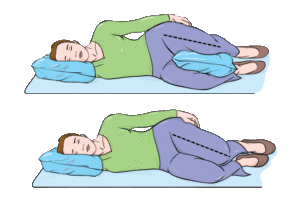Sleep and Rehabilitation
They say the pillars of health are to have good nutrition, exercise, relationships, and a healthy mind. However, one of the most overlooked aspects of wellness is sleep!
Sleep is a critical factor which influences your overall health and your ability to rehabilitate an injury you are treating in physical therapy.
Why do we need it?
Sleeping is actually a very complex task performed by your body for several vital purposes:
- Maintenance of the microbiome in your gut
- Regulates appetite and controls body weight
- Manages blood-pressure
- Re-calibrates the brain
- Fights infection and malignancy
- Reforms metabolic state of body
There is research that shows the following is more likely to happen if you have chronic sleep deprivation:
- Difficulty concentrating
- Mood swings
- Increased anxiety/depression
- Immunosuppresion
Sleep deprivation also leads to an increased risk of:
- Cancer
- Cardiovascular disease
- Appetite and weight-gain
- Diabetes
How does sleep impact outcomes in rehabilitating a musculoskeletal injury?
One can see that sleep offers wonderful, restorative effects to both the body and mind. When you are sleeping, your body is healing, while not sleeping does the complete opposite. It goes without saying that one of the keys to successful healing of our body’s tissues requires good rest on a consistent basis, especially if the tissues are injured!
In physical therapy, we treat the cause of musculoskeletal pain through various interventions; however, there is strong evidence that shows how an individual’s pain level can be perceived to be even higher when there is insufficient, interrupted, and/or delayed onset sleep time. Let’s not forget how sleep deprivation can affect your ability to learn new movement patterns, which can most certainly delay progress through physical therapy.
This chart is a great way for us as physical therapists to screen for any sleeping disorders, where the 3 most common are: insomnia, sleep apnea, and restless leg syndrome. In answering these questions, we can determine if referral to a specialist may be required in order to address the issue.
General Guidelines for “Sleep Hygiene”
Whether you are dealing with a disorder or not, practicing good hygiene can be very effective in having a better night’s sleep.
Some sleeping tips include:
- Go to bed and wake up at the same time every day to train your “biological clock” (yes, even on weekends).
- You will want to avoid eating, working, or watching TV in bed.
- Avoiding
- rigorous exercise 2-3 hours prior to bedtime
- caffeine at least 4 hours prior to bedtime
- large meals 2-3 hours prior to bedtime
- Limit light exposure in your bedroom. This includes light from the window or electronics (such as a phone charging). A good rule: if you can make out the shape of your hand at arm length when the lights are off, consider inspecting and finding ways to reduce light emission.
Practicing this can lead to an improved quality of sleep, which can generally improve your overall quality of life! The body is resilient and wants to repair itself in several ways and part of what we do in physical therapy is to help facilitate that process; but one of the greatest avenues your body has is sleeping. So to all, have a good night!
If you are experiencing any aches or pains even after a good night’s sleep, contact us to schedule a virtual appointment. Otherwise, come see us at the clinic for a session!
Written By: Dr. Stanislaw Sowinski
